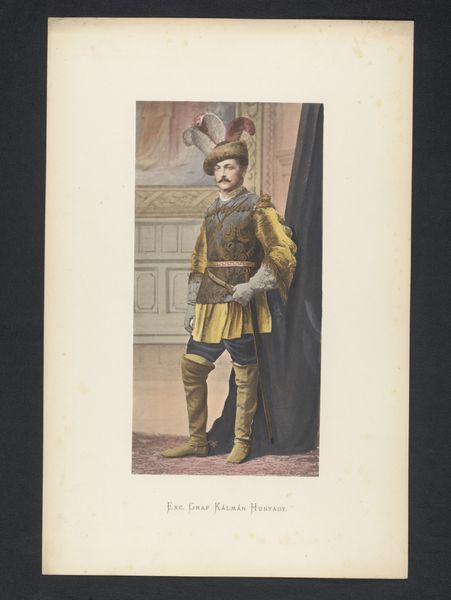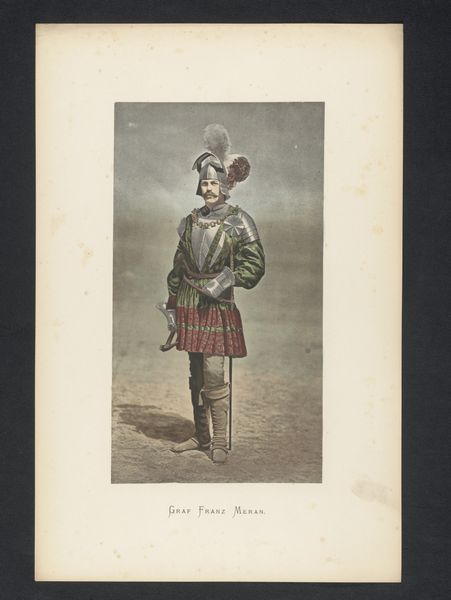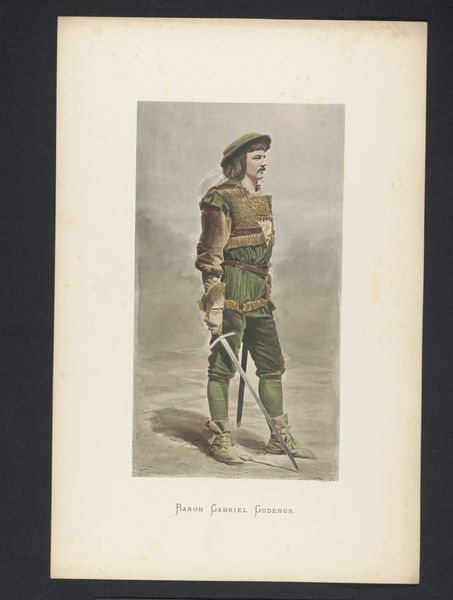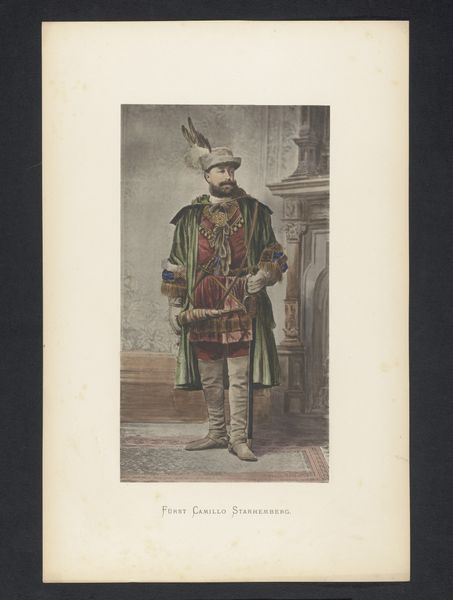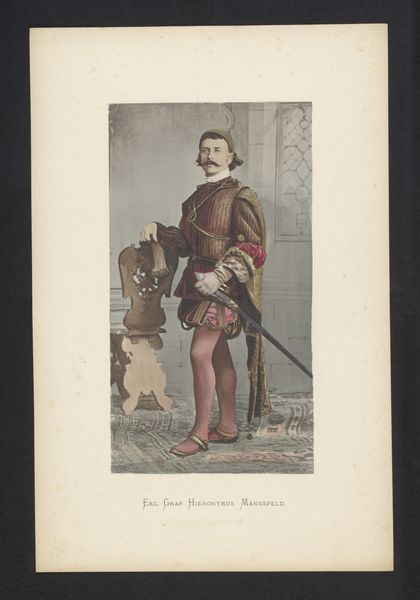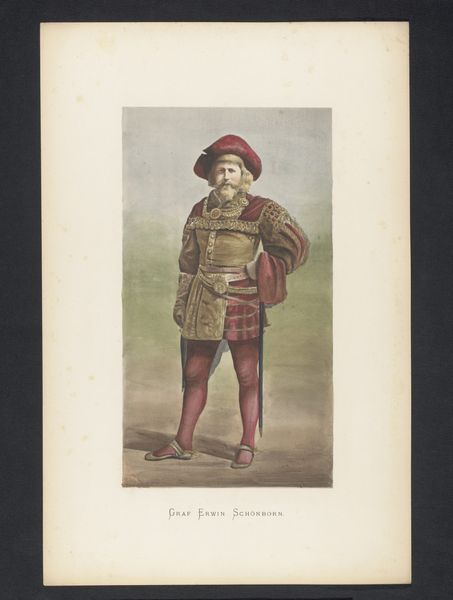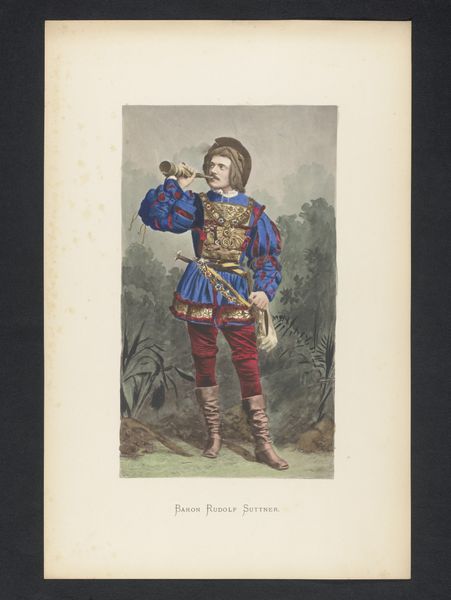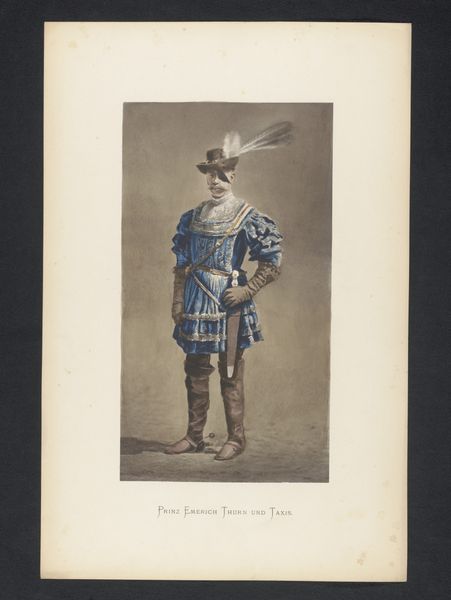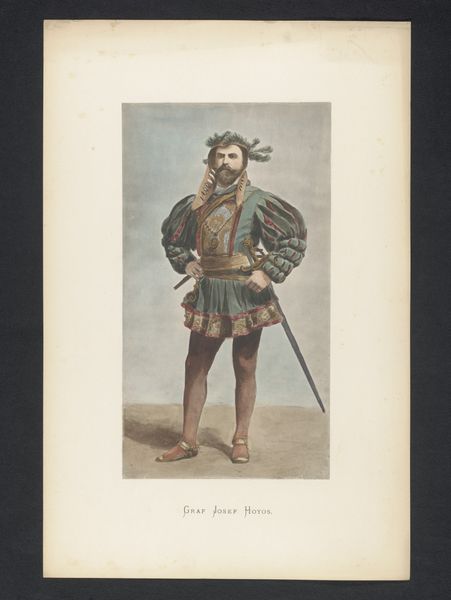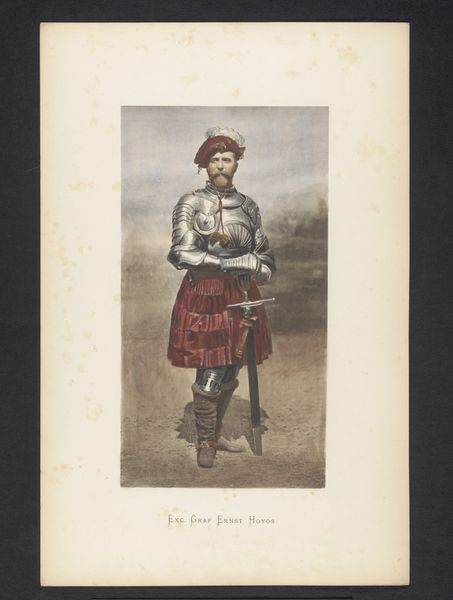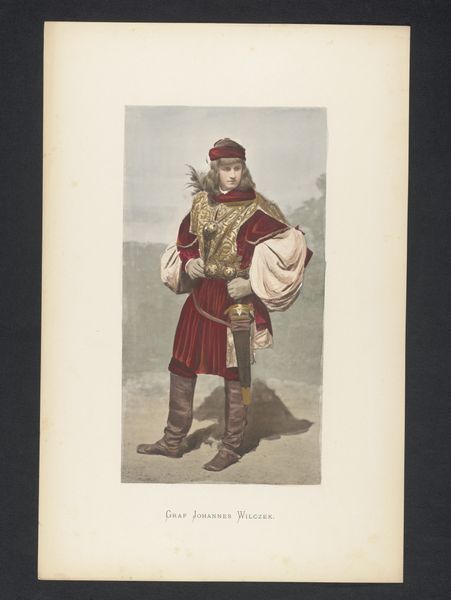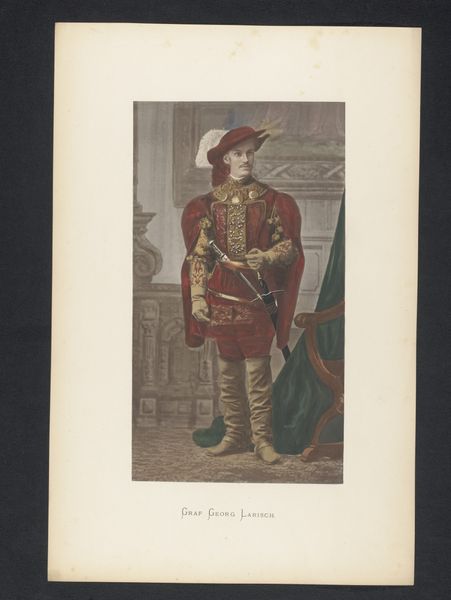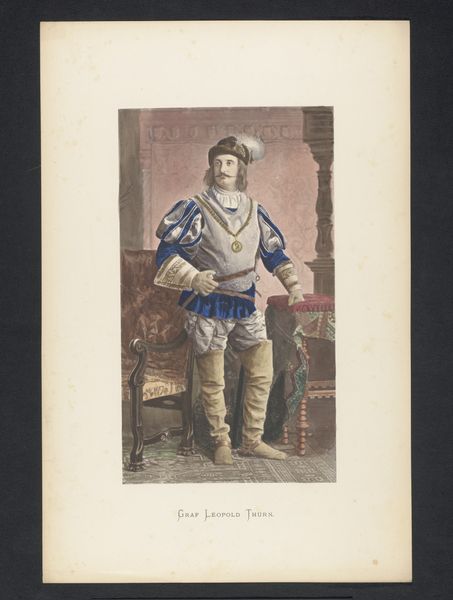
#
portrait
# print
#
figuration
#
history-painting
#
academic-art
Dimensions: height 376 mm, width 204 mm
Copyright: Rijks Museum: Open Domain
Editor: Here we have an intriguing print, possibly created between 1880 and 1884, titled "Portret van graaf Rudolf Kinsky," or Portrait of Count Rudolf Kinsky. The Count is shown in what appears to be historical costume, and there's a theatricality to his pose. How do you interpret this work within the context of its time? Curator: It's fascinating how this print attempts to invoke history. Notice the elaborate costume, the implied heraldry on his chest. Prints like these, especially portraits dressed as historical figures, became popular during the late 19th century, fueled by a rising sense of nationalism and a romanticized view of the past. Does this strike you as an accurate representation of earlier historical dress? Editor: Not really. The details seem a bit…off, theatrical almost, like a costume. Curator: Exactly! That's a crucial point. This isn’t about historical accuracy, it’s about constructing a narrative. The Kinsky family likely commissioned this to bolster their lineage, linking themselves to a glorified, imagined past. Consider how this image might function in a gallery. It certainly suggests aristocratic power and links to Czech history, reinforcing social hierarchies of the time. The printing medium also hints at wider distribution and self-promotion beyond the gallery space, influencing public opinion on this prominent family. How effective do you think that effort was? Editor: I see what you mean, and I think you're right. Looking at the Kinsky coat of arms online, the symbols in this portrait look quite simplified. What's also interesting to me is that he holds the crossbow, signaling perhaps more than aristocracy but the skill of the aristocracy. Curator: Precisely. It presents an intriguing intersection of historical reenactment, aristocratic identity, and print culture of the late 19th century, suggesting a sophisticated strategy of self-representation within specific historical and political contexts. What have we learned here today? Editor: It seems clear that this print tells more about late 19th-century social and political aspirations than about Count Kinsky's life in particular! Thanks.
Comments
No comments
Be the first to comment and join the conversation on the ultimate creative platform.
